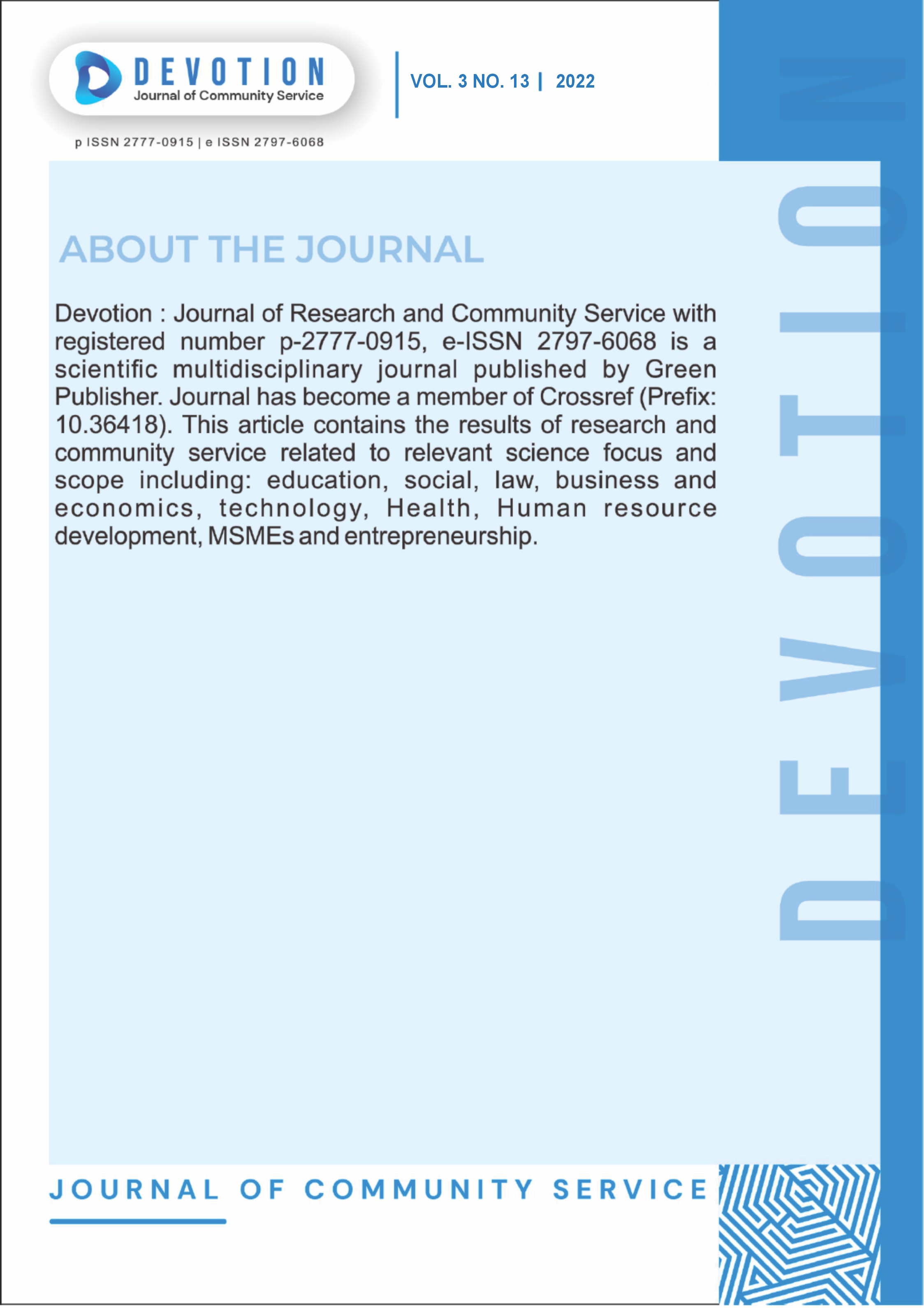Prediction of Catfish Yield To Fulfill Community Needs Using Multiple Linear Regression Algorithm Method
DOI:
https://doi.org/10.36418/dev.v3i13.270Keywords:
Prediction, Data Mining, Multiple Linear Regression AlgorithmAbstract
Fishery is one sector that is important for human life, because most of human needs come from fisheries, one example is the need for catfish. Currently, there is a gap between crop yields and community needs, which is indicated by very high demand while yields are low. Therefore, this study was conducted to predict catfish yields using a linear regression algorithm so that community needs are met. The method used for the training process in this study uses Multiple Linear Regression. Multiple Linear Regression is an analysis conducted on the dependent variable / dependent variable and two or more independent or independent variables. In contrast to simple regression which only has one independent variable and one dependent variable. Predicting the size of the dependent variable using the independent variable data which is already known. The results of this study analyzed the value of Root Mean Squared Error, and Mean Absolute Error. The result of the line equation from the training data for catfish harvesting is yˆ = -310.6119 + 0.0759x1 + 0.0245x2 + 0.6104x3
Published
Issue
Section
License
Copyright (c) 2022 Syifa Nurazizah, Sri Winarno

This work is licensed under a Creative Commons Attribution-ShareAlike 4.0 International License.
Authors who publish with this journal agree to the following terms:
- Authors retain copyright and grant the journal right of first publication with the work simultaneously licensed under a Creative Commons Attribution-ShareAlike 4.0 International. that allows others to share the work with an acknowledgement of the work's authorship and initial publication in this journal.
- Authors are able to enter into separate, additional contractual arrangements for the non-exclusive distribution of the journal's published version of the work (e.g., post it to an institutional repository or publish it in a book), with an acknowledgement of its initial publication in this journal.
- Authors are permitted and encouraged to post their work online (e.g., in institutional repositories or on their website) prior to and during the submission process, as it can lead to productive exchanges, as well as earlier and greater citation of published work.













